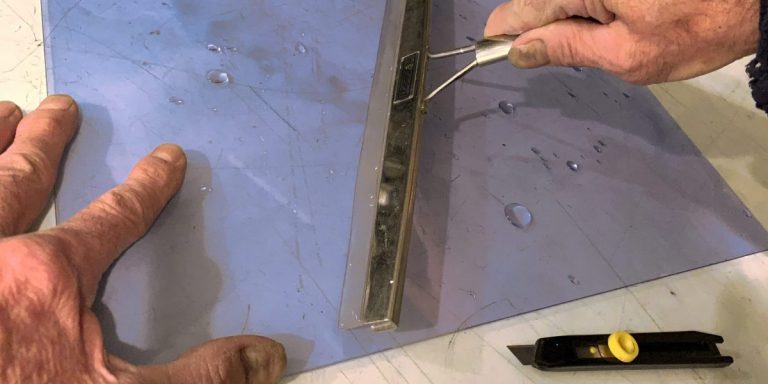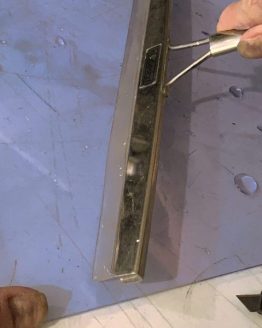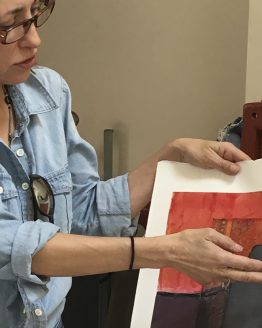
ImagOn is an alternative photopolymer film. It comes in various size rolls that need to be laminated to a substrate to be used in a similar manner as KM or Solarplate. Although it is less costly it takes some preparation to be used. In this demo you will learn how to effectively cut and de-burr your plate in preparation to laminate the film using a water bath. The step by step process of laminating will show you how to best get an even and secure contact that will hold up for years over many printings. Once an ImagOn plate has been exposed it needs to be developed in an alkaline bath. You will learn how to mix this solution, how to properly wash out the developed plate and get some great tips on inking and wiping the finished plate. In addition you will learn about the handling and care of ImagOn plates.
This 2 hour interactive demo includes questions from participants followed by optional 30 minute individualized Confer and Critique Add-On sessions that may be purchased in advance below or at checkout. Additional hour long Confer ‘n Critique sessions may be scheduled by appointment.
Note: If working in your own studio a press is necessary for printing ImagOn plates and is not suitable for hand printing.
For a full hands-on engagement you will need the following:
- A roll of ImagOn HD film
- Substrate plate material- Although most smooth and non-absorbent material will suffice- clear acrylic, polycarbonate, copper plate, etc. I use PETG, a more flexible clear plate material for ImagOn as well as for monotype (.03 thickness). It’s available in large sheets or pre-cut.
- Duct tape or other strong and sticky tape
- Window squeegie
- Exacto knife or razor cutter
- A clean glass work surface
- Developing tray- can be used for both laminating and developing
- 1 gallon distilled water
- 1 liter measuring container
- a 5 or 10 gm measuring device- many plastic water bottle tops hold 5gms
- Supply of soda ash (Sodium Carbonate) or “Washing Soda”
- A work sink or other suitable water source and work area
- A minutes timer
- White vinegar in a spray bottle
- Contact frame for sun or light box exposure or a vacuum frame exposure unit (recommended)

